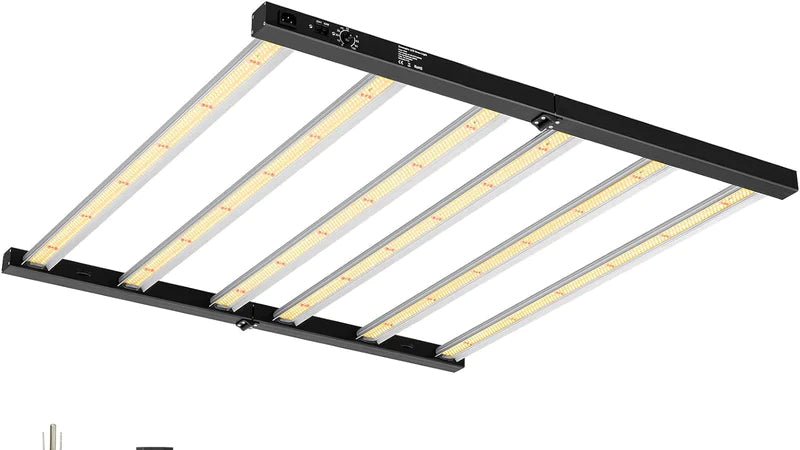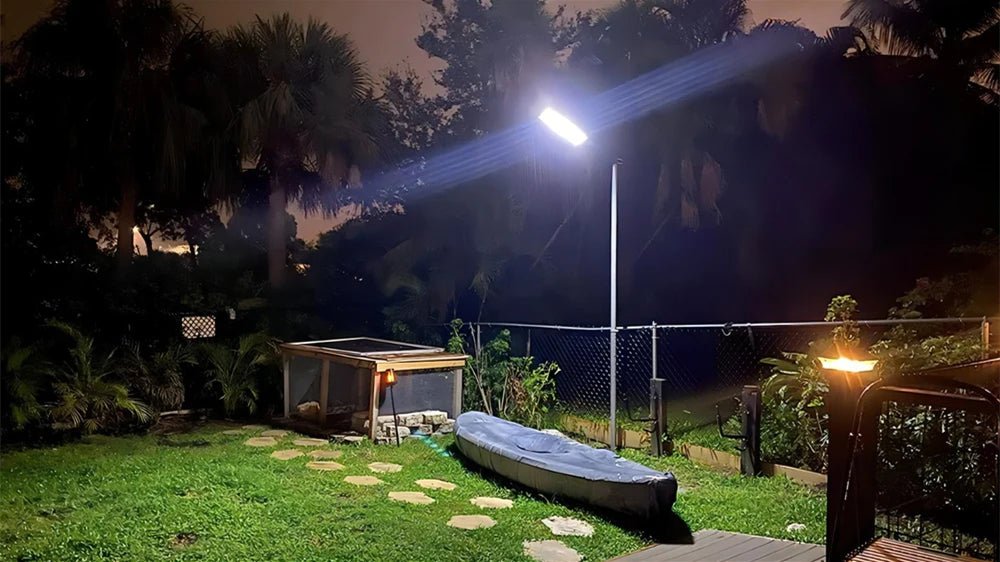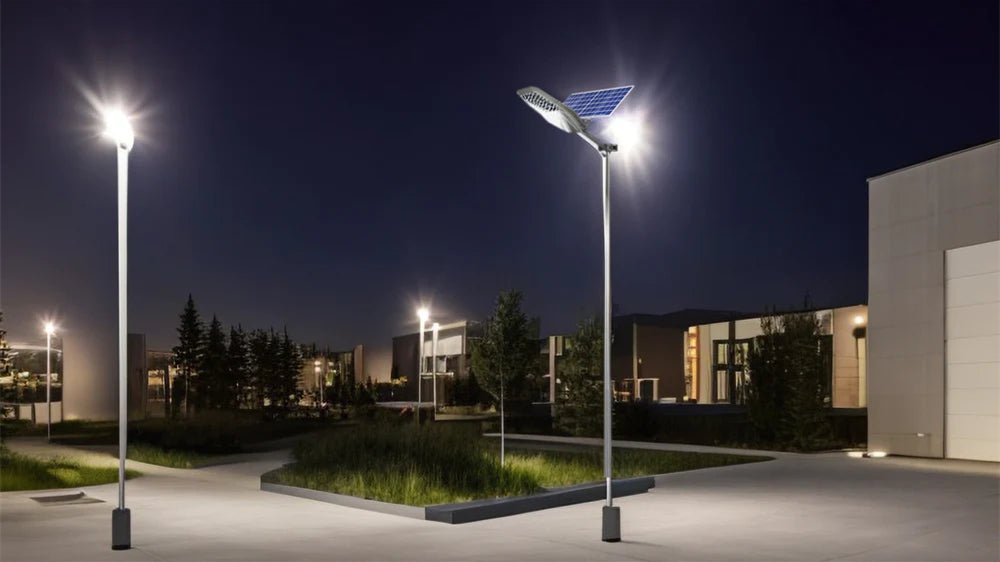Full Spectrum LED Grow Light, a sophisticated solution designed to emulate the complete light spectrum of the sun. This comprehensive guide aims to demystify the intricacies of Full Spectrum LED Grow Lights, offering insights into their composition, functionality, and optimal utilization for unparalleled plant growth.
What is Full Spectrum LED Grow Light?
Full Spectrum LED Grow Lights represent a leap forward in artificial lighting for plant cultivation. Comprising a diverse range of wavelengths, including red, blue, and even infrared and ultraviolet, these lights mimic natural sunlight. Dive into the technicalities of their composition, exploring how each wavelength contributes to the overall health and vitality of plants.
How Do Full Spectrum LEDs Work?
Understanding the intricacies of Full Spectrum LED Grow Lights is essential for maximizing their efficiency in indoor gardening. Here's a concise exploration of their mechanisms:
1. Wavelength Precision:
Full Spectrum LEDs are calibrated to emit precise wavelengths, particularly red and blue light, crucial for targeted and efficient photosynthesis.
2. Photosynthetic Active Radiation (PAR):
Explore the concept of PAR, where Spectrum LEDs are designed to emit light within the essential range (400-700 nanometers) for photosynthesis, ensuring optimal plant energy absorption.
3. Chlorophyll Absorption:
Red light enhances photosynthesis during the vegetative stage, while blue light plays a key role in flowering, promoting comprehensive plant health.
4. Balancing Light Spectrum:
Full Spectrum LEDs balance the light spectrum by including various colors, mimicking natural sunlight. This diverse spectrum improves nutrient absorption, influences plant morphology, and enhances overall resilience.
5. Adjustable Light Spectrums:
Some advanced Spectrum LED systems allow users to customize the light spectrum based on the growth stage, providing dynamic and tailored lighting solutions for germination, vegetative growth, and flowering.
6. Energy Efficiency and Heat Management:
Full Spectrum LEDs reduce heat emission minimize the risk of damage to plants and ensure a controlled growing environment.

What Kind of Light Do Plants Need?
Plants require specific light conditions for optimal growth, and understanding their light needs is fundamental to successful cultivation. Here's a concise exploration:
1. Plants primarily need light in the blue (400-500 nm) and red (600-700 nm) spectrums for photosynthesis. Blue light is crucial during the vegetative stage, promoting root development and compact growth. In contrast, red light becomes essential during the flowering stage, stimulating flowering and fruiting.
2. The intensity of light, measured in lux or foot candles, is vital. Different plant varieties and growth stages demand varying light intensities. Providing the right balance ensures plants receive adequate energy for photosynthesis without causing stress.
3. Duration of light exposure, or photoperiod, is another critical factor. Plants require a specific amount of light per day, with variations during growth phases. Maintaining a consistent light schedule mimicking natural day-night cycles is key to sustaining healthy plant development.
4. Quality of light is equally crucial. Full Spectrum LED Grow Lights, encompassing various wavelengths beyond red and blue, contribute to balanced plant development. This diverse spectrum enhances nutrient absorption, influences morphology, and fosters overall plant resilience.
5. Different stages, from germination to flowering, necessitate tailored lighting conditions. Customizing light exposure based on growth phases ensures plants receive the right signals for robust development.

Are Full Spectrum LED Lights Good for Plants?
Examine the myriad benefits of incorporating Full Spectrum LED Grow Lights into your indoor gardening setup. From energy efficiency and extended lifespan to improved plant morphology and yield, these lights offer advantages that make them indispensable. Real-world case studies and success stories underscore the positive impact on plant health and overall productivity.
How Far Should Full Spectrum Grow Lights Be from Plants? and How Long to Leave the Light On?
The proximity of Full Spectrum LED Grow Lights to plants significantly influences their growth. Striking the right balance ensures optimal light absorption without causing stress. Here's a brief guide:
1. Optimal Distance: During the seedling and vegetative stages, maintain a distance of 24 to 36 inches between the lights and plants. For flowering, reduce the distance to 18 to 24 inches. Regularly monitor plant response, adjusting the distance if signs of stress, like leaf bleaching or wilting, appear.
2. Duration of Light Exposure: The duration of light exposure, or photoperiod, varies during different growth stages. Seedlings typically need 16 to 18 hours of light, while mature plants can thrive within 12 to 14 hours. Adjust the light schedule based on the specific needs of the plant species and growth phase.
3. Seedling Stage: Seedlings require gentle light exposure to prevent stretching. Begin with 16 to 18 hours of light per day, gradually reducing to 12 hours as they mature. Keep the lights 24 to 36 inches away during this phase to encourage strong and compact growth.
4. Vegetative Stage: For the vegetative stage, maintain the same light distance but adjust the photoperiod based on the plant's needs. Most plants thrive with 18 hours of light, promoting robust foliage development.
5. Flowering Stage: During flowering, reduce the light distance to 18 to 24 inches to enhance light intensity. Adjust the photoperiod to 12 hours of light per day to stimulate flowering and fruiting. Monitor closely for any signs of stress.
6. Experiment and Monitor: Ultimately, the ideal distance and duration may vary based on factors like plant species, environmental conditions, and individual preferences. Regularly monitor plant response and be willing to experiment with adjustments to achieve the best results.

Conclusion:
In conclusion, Full Spectrum LED Grow Lights emerge as a pivotal tool for indoor gardening enthusiasts and professionals alike. By seamlessly replicating the sunlight spectrum, these lights cater to the diverse needs of plants, promoting healthy growth and enhancing overall vitality. As you embark on your indoor gardening journey, armed with a deep understanding of their composition, functionality, and best practices, you can unlock the full potential of Full Spectrum LED Grow Lights.


































Leave a comment
This site is protected by hCaptcha and the hCaptcha Privacy Policy and Terms of Service apply.